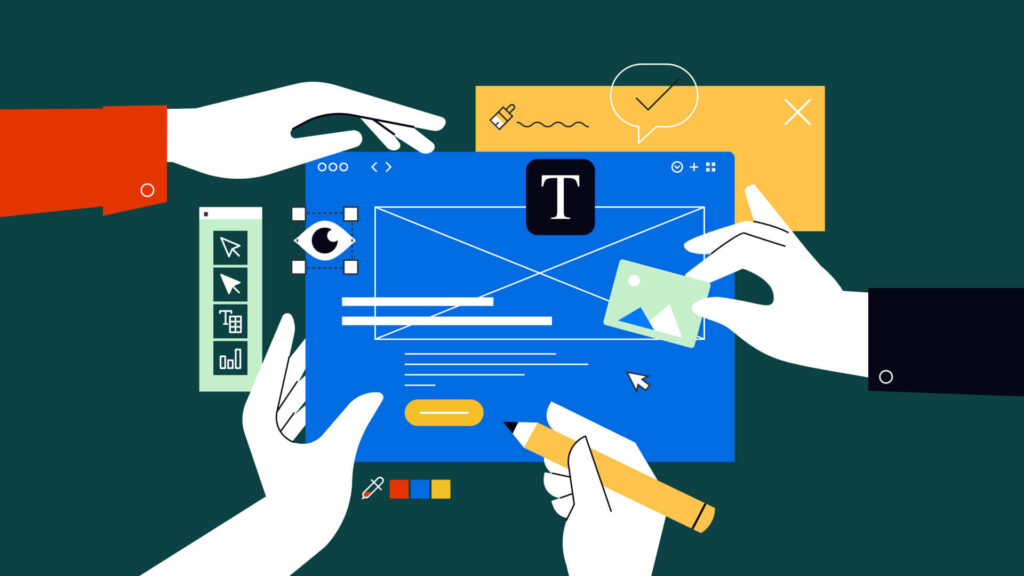Think of Nike, Apple, and Coca-Cola. Without seeing their logos, you already know what they look like. That’s the power of an effective logo — it doesn’t just represent a brand, it becomes the brand.
A great logo means art, science, and strategy behind timeless branding. A good logo does more than look aesthetically pleasing; it helps your business:
Stand out in a crowded market.
Enhance brand recognition across different platforms.
Communicate brand values in a single visual mark.
Establish trust and credibility with customers.
Your logo appears everywhere — on products, websites, social media, ads, packaging, and any digital design asset. That’s why getting it right from the start is crucial.
So, what makes a good logo? Whether you’re designing one yourself or working with professionals, these key principles will ensure your logo is iconic, memorable, and effective.
1. Choose the Right Visual Elements — Because Every Detail Speaks
A great logo is intentional—every design choice, from typography to color, plays a role in how your brand is perceived.
1. Typography: The Personality of Your Brand
Fonts evoke emotions, just as words do. Understanding font psychology ensures your logo communicates the right message and shapes your brand identity:
- Serif Fonts (e.g., Times New Roman, Garamond) → Tradition, trust, reliability (Think: Rolex, Vogue)
- Sans Serif Fonts (e.g., Helvetica, Futura) → Modern, minimal, approachable (Think: Google, Airbnb)
- Script Fonts (e.g., Coca-Cola, Cadillac) → Elegance, creativity, personal touch
- Custom Typography → Creates uniqueness (Think: Disney, Coca-Cola, FedEx)
Real example: The FedEx logo is a masterclass in simplicity with a hidden arrow in the negative space between the “E” and “x”—a subtle nod to precision, movement, and efficiency.
2. Shapes: The Silent Storytellers
Shapes influence perception before we even read words.
- Circles & Ovals → Unity, wholeness (Think: Target, Starbucks)
- Squares & Rectangles → Stability, trust (Think: Microsoft, American Express)
- Triangles → Power, direction, ambition (Think: Adidas, Mitsubishi)
Real example: Adidas’ three stripes form an upward-angled mountain, symbolizing growth and achievement—perfectly aligned with an athletic brand.
3. Color Psychology: The Science of Perception
Colors evoke specific emotions and influence buying decisions:
- Red → Passion, energy, urgency (Think: Coca-Cola, Netflix)
- Blue → Trust, professionalism (Think: Facebook, PayPal)
- Yellow → Optimism, friendliness (Think: McDonald’s, IKEA)
- Black & White → Elegance, simplicity (Think: Chanel, Apple)
✨ Design Force Tip: Learning color psychology can help you pick the right palette for your logo. Make sure that the color combination will not affect legibility and that it’s flexible enough to still appear good when the logo is rendered black and white.
2. Be Timeless — Avoid Trends That Fade
Trendy logos might feel fresh today, but they date quickly. A timeless logo ensures long-term brand consistency.
Coca-Cola vs. Pepsi: A Lesson in Longevity
- Coca-Cola has maintained its classic script logo for over a century with only minor refinements.
- Pepsi, on the other hand, has redesigned its logo more than 10 times in 100 years.
The result? Coca-Cola’s brand recognition is stronger due to its consistency.
Real example: The Nike Swoosh has remained virtually unchanged since 1971—proof that simplicity and meaning outweigh temporary trends.
✨ Design Force Tip: Choose a logo that will age gracefully and still feel relevant in 10, 20, or 50 years.
3. Choose Simplicity — Because Simplicity Sticks
The human brain processes simple visuals faster. A cluttered logo can be harder to recognize, reducing brand recall.
A simple logo:
Is easy to recognize at a glance
Works in any size and format
Avoids unnecessary complexity
Real example: Apple’s logo evolution is a lesson in simplification:
- It started as a detailed illustration of Isaac Newton under an apple tree.
- Then, it transformed into the sleek apple silhouette we know today—one of the most recognizable logos in the world.
✨ Design Force Tip: Your logo should be effective even when shrunk down to a tiny favicon.
4. Make It Memorable — So It Sticks in People’s Minds
A memorable logo strikes the perfect balance between:
Strong visuals (symbol or typography)
Emotional connection (meaning and brand values)
Instant recognition (uniqueness)
Real example: Amazon’s logo has a hidden message:
- The arrow from A to Z represents “everything you need” in one place.
- The arrow also resembles a smile, reinforcing customer satisfaction.
✨ Design Force Tip: Logos that incorporate subtle symbolism create stronger brand recall.
5. Reflect Your Brand’s Story or Values
Your logo should be more than just a pretty symbol—it should tell a story. What do you want your business to mean to your customers? What is your brand story? What problem do you want to solve? Know first your company’s direction, then create your logo.
Real example: Sony VAIO’s logo is a clever representation of technology evolution:
- The “V” and “A” resemble an analog wave.
- The “I” and “O” symbolize binary code (1s and 0s).
- Together, they illustrate the transition from analog to digital technology.
Another real example: Baskin-Robbins’ logo hides a “31” in the letters “B” and “R,” referencing their 31 original ice cream flavors.
✨ Design Force Tip: A great logo tells your story without using words.
Final Thoughts: A Logo Is an Investment, Not Just a Design
So what makes a good company logo? Your logo sits at the foundation of your company’s brand identity. It shouldn’t be treated like a random image that can be changed anytime, as you will carry your logo for as long as your business is alive. It takes time to create a good logo, but the payoff is well worth it, especially when you leave a good, memorable, and lasting impression on your customers.
So remember: A logo isn’t just an image—it’s the foundation of your brand identity and brand guide. It should be:
- Versatile: Looks great in any size, format, or background.
- Distinctive: Avoids generic icons that blend in with competitors.
- Memorable: Simple enough to be recognized instantly.
- Strategic: Represents your mission, values, and goals.
Want to keep your creative assets fresh and aligned with your brand? At Design Force, we provide world-class on-demand design subscription services to support your brand with your ongoing creative needs. Meet us today and subscribe to our blog for more insights on branding, design strategy, and creative innovation.



